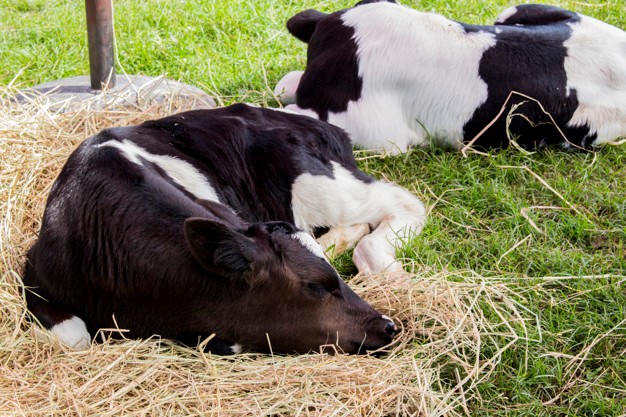

Social Stress
Social stress has a significant impact on production performance.
The most common social stressors in cattle are:
- Maternal separation and weaning
- Social isolation and mixing
- Cattle overstocking
Maternal Separation and Weaning
In 5- to 6-month old beef calves, abrupt maternal separation produces:
- Psychological stress of breaking the maternal bond
- Nutritional changes associated with their changed diet
This separation results in behavioral changes in cattle—both calves and cows—that may persist for several days and cause a more chronic form of stress.
Their vocalization and ambulation activity may increase, and this may persist at elevated levels for at least three days.

Mixing and Social Isolation
Cattle are herd animals that establish social orders with dominant and submissive animals within each group.
Factors to consider, especially during the transition period (three weeks pre-calving until three weeks post-calving), when feeding behavior is naturally depressed1:
- Competition for resources
- Stocking density
- Group size
- Group composition, especially commingling of primiparous and multiparous cows
Introducing a single animal to an established group produces acute behavioral and biological responses, including:
- Reduced epithelial cell tight junctions
- Altered response to infection
- Increased fear response
- Altered heart rate
- Decreased milk production
When introducing freshening heifers in a competitive situation in the same herd with the older cows, it is essential to mix pregnant heifers and dry cows for 2-3 months before calving. In automatic milking systems, research2 has shown that primiparous cows grouped together had more visits to the robotic milking unit and to the feed troughs but apparently spent less time eating than primiparous cows grouped with multiparous cows.
Overstocking
Many studies document the effects of short-term overstocking on cow behavior but quantitative measures of overstocking on behaviors such as milk yield, fertility or lameness are scarce3.
- Approximately 120% stocking density or 1.2 cows/stall = maximum allowable before cow behavior is affected
- Difficult to quantitatively measure overstocking effects on milk yield, fertility or lameness
Cattle overstocking can affect the lying and standing behavior of dairy cattle because competition for stalls is increased, causing a reduction of lying time and a higher standing time outside the stalls. Reducing the feeding space per cow increases competition for feed, causing aggressiveness. Cows can vary their feeding rate in response to increased stocking pressure, and social mixing can lead to a decrease in time the cows spend feeding1,2
- Grant, R.J., 2006. Dairy cow behaviour and management. Int. Dairy Topics 5(1):21-25.
- Bach, A., Iglesias, I., Devant, M., Ràfols, N., 2006. Performance and feeding behavior of primiparous cows loose housed alone or together with multiparous cows. J. Dairy Sci. 89:337-342.
- DeVries, T.J., von Keyserlingk, M.A.G., 2006. Feed stalls affect the social and feeding behavior of lactating dairy cows. J. Dairy Sci. 89:3522-3531.

